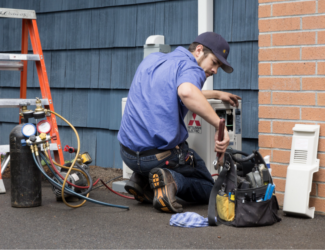
Is solar right for you?
Solar power is an exciting renewable energy source. An optimally installed system in Snohomish County or Camano Island will generate approximately 1,100 kilowatt-hours per year for each kilowatt of installed capacity. Incredible!
That said, even though solar systems are coming down in cost as the market evolves, the program and bills are complicated and customers will need to take on a great deal of self-study to ensure they are making the most of their energy-savings.
Before you make your final decision on whether rooftop solar is a practical idea for your home or business, consider these three questions:
- Does your site have good solar exposure? About 250 square feet of un-shaded roof space facing south, southeast, or southwest is a great start, though not always required.
- How much electricity do you use in a year? Review your PUD bills, keeping in mind that energy use can vary dramatically from winter to summer.
- What are your financial goals? Do you have a fixed budget, are you considering financing options, or do you have a certain payback period in mind?
A good place to start when looking for a solar installer is the Washington Solar Energy Industries Association (WASEIA). If you have any questions, reach out to the PUD’s Energy Hotline at 425-783-1700.
Helpful tips for choosing a solar installer
Review consumer protection information
Review the Washington Solar Consumer Protection Act for important information: read the entire document here. The act introduces several key measures to protect consumers, such as:
- Prohibiting predatory tactics
- Standardizing contractual language
- Reinforcing licensing regulations for solar installers
- Empowering the Attorney General’s office to penalize non-compliant companies
- Requiring solar companies to provide detailed disclosures about system performance, warranties, financing alternatives, and potential cost savings
Get multiple bids
No two solar installers are alike. Some handle everything in-house, some subcontract out parts of the project. Some aim for quality, others for competitive pricing. Speaking to multiple installers will help you understand the nuances of your project and ensure you’re getting the quality and value that best suits your needs.
Speak to the system designer
Everyone’s house is different. A well-designed solar energy system takes your needs and the practical aspects of your house into consideration. A solar energy system is always a custom design. When getting bids, make sure you are dealing with the system designer and not just a commission-based sales rep.
Tip: To ensure best results, challenge the sales rep. Ask about your property, the pitch of the roof, how they have accounted for shade. If you don’t feel the person you are talking to has in-depth technical knowledge, ask to speak with the system designer, as they will ultimately determine whether the system operates as sold.
Understand how the system works and what equipment is being used
The solar industry is constantly changing. The best value-for-money equipment on the market 10 years ago is not necessarily best today. Your solar installer should have a good working knowledge of equipment options. When you sign a contract, you should know exactly what you are buying and why it’s best for you.
Tip: Some solar panel, inverter, and battery manufacturers require installers to be vetted and certified in order to install their products with the full warranty. It pays to ask your installer if they are authorized installers of the products they are selling. Otherwise you could be caught without a full warranty. Additionally, make sure the installer handles any product registration requirements.
Understand your solar financial case
The most important parts of your solar financial case are:
- How much energy the solar system will produce
- How much money that ultimately saves you
- What is and isn’t included in your solar tax credit
An accurate energy production estimate takes into account your location, roof pitch, orientation and the efficiency of the equipment being installed. Do not accept a ballpark estimate as a final production report — a system designer should be able to show you a detailed shading analysis specific to your roof. Double-check the math — what rate of inflation is being used on the cost of energy; what cost per kilowatt-hour (kWh) is being used?
Finally, your tax credit is based on the final cost of the system. If an installer offers you a rebate after purchase, that installer is artificially inflating the system cost to make your tax credit look bigger than it is. Remember, your tax credit is based on the final amount you pay for the solar system after rebates.
Tip: While the final installation cost is very important, remember that your system is supposed to last 25 to 40 years so warranties are important. If a solar sales rep is showing you a 25-year energy saving but the equipment they are suggesting only carries a 10-year warranty, they should also advise you on the cost of out-of-warranty replacements.
Find examples of the installer's work
Talk to the installer’s past customers and understand their experience. Ideally, you want to find both people who have had a system installed recently and also people who have had their system for 5-10 years. This helps you understand the current experience but also the long-term customer service you can expect.
Sleep on it
Never feel pressured to sign the contract immediately. You need a chance to process what you’ve been told, compare bids, and make an informed decision.
Tip: A system designer needs to perform a site assessment before your final bid is created in order to:
- verify that the panels will fit
- account for roof vents
- measure on-site shading and solar resource
- confirm that the roof has enough life left in it to install over, and
- confirm adequate capacity in your electrical panel for the solar system.
If no one has checked these things, then the savings estimate, roof layout and price probably aren’t accurate. Be wary of any sales rep coming out with a final contract drawn up before the site visit.
Excited about exploring the possibility of solar energy for your home or business?
You’re not alone. Thanks to booming interest and industry growth, solar is more accessible than ever. However, be wary. As interest in solar has grown, so have high-pressure sales tactics.
Here are some of the most common misleading/false statements (click on each statement to learn more):
A door-to-door solar salesperson says they are working for the PUD.
FALSE.
PUD does not have door-to-door salespeople. If a solar sales representative claims to be from the PUD, they are not being truthful.
“See if you qualify for Washington’s no-cost solar program!”
MISLEADING.
Facebook and other social media sites have become common venues for ads promoting “low-cost” or “no-upfront-cost” solar programs. While the idea of spending little to no money on a solar installation may sound tempting, these ads make misleading claims about special government or utility programs that don’t exist.
“Net metering can give you a new monthly paycheck”
FICTION.
With net metering, you can receive utility bill credits for the excess generation that your solar panels produce. However, in most cases, you won’t receive a cash payment from your utility for your excess solar electricity. If you do generate more electricity than you use in a year, those credits will zero out after March 31 of each year per RCW 80.60. With that in mind, it’s important that your system size is large enough to offset as close to 100 percent of your electricity needs as possible, but not to produce significantly more than you use.
“If you need to re-roof before installing solar, you can claim your new roof cost as part of your 30% solar tax credit.”
FALSE.
IRS information about whether a roof is eligible for the 30% Residential Energy Efficiency Credit:
In general, traditional roofing materials and structural components do not qualify for the credit. However, some solar roofing tiles and solar roofing shingles serve as solar electric collectors while also performing the function of traditional roofing, serving both the functions of solar electric generation and structural support and such items may qualify for the credit. Components such as a roof’s decking or rafters that serve only a roofing or structural function do not qualify for the credit. (Source: IRS.gov)
There is a different credit available for qualified energy-efficiency improvements under the Nonbusiness Energy Property Credit, which has a total combined credit limit of $500 and can apply to:
…metal roof with the appropriate pigmented coatings or an asphalt roof with the appropriate cooling granules that are specifically and primarily designed to reduce the heat gain of your home, and the roof meets or exceeds the Energy Star program requirements in effect at the time of purchase or installation. (Source: IRS Instructions for Form 5695)
"We will give you rebates after your system is installed!"
USE CAUTION.
Your tax credit is based on the final cost of the system. If an installer offers you a rebate after purchase — especially after you claim your tax credit — they are artificially inflating the system cost to make your tax credit look bigger. Sometimes the “rebate” is just the installer getting you a cash-out loan or other financing method that raises the overall loan amount. Please clarify with a tax professional as to how any rebates should be handled with regard to your taxes.
According to the IRS:
Rebates generally represent a reduction in the purchase price or cost of property, and the taxpayer must exclude the amount of the rebate from the amount of the qualified expenditure on which the taxpayer calculates the tax credit. (Source: IRS.gov Notice 2013-70 Section 3 A-11.02)
"We have in-house financing that covers your first 12 months of payments!”
USE CAUTION.
Some companies offer in-house solar financing and promote perks to incentivize you to use their services. If a company is offering to “cover” your first loan payments for a specified period, read the fine print and consider these points:
- Are they covering your payments or simply deferring them?
- If covered, that could be considered a rebate off the total cost of the system, which would affect your solar tax credit (see previous section about rebates).
- If deferred, you could still be paying interest for the period of time before payments begin.
- Some companies also require you to apply your tax credit to the balance of your loan or risk your monthly payments increasing.
- Make sure you understand the full terms of your financing and clarify all conditions under which payment terms could change.
Consider independent financing. Washington state is home to several credit unions that offer solar financing independent of your installer.
“Your electric company will pay you for generating excess solar!”
MISLEADING.
Under Washington state law (RCW 80.60), electric utilities are required to allow you to send excess electricity back onto the grid and credit your account for excess generation (in kilowatt-hours) at the utility’s retail rate – this is called “net metering.” While you are credited at retail rate, you are generally not issued a check for excess production. This kWh credit remains on your account until you use it and resets each year on March 31. This means any credit remaining at that time is zeroed out and the cycle starts again. This is why you should aim to size your system to meet but not exceed your annual electrical usage.
It’s also important to make the distinction between solar net metering offsetting your electric usage as opposed to replacing your utility bill. Net metering cannot offset minimum monthly charges for grid connection or other utility charges such as water.
Washington state used to have a production incentive program that closed to new applicants in June 2019 due to hitting its funding cap. Systems installed and certified as part of this program receive an annual incentive payment based on the system’s total production for eight years or until cumulative incentive payments are equal to 50% of the total system price. These checks are issued by the state via the customer’s electric utility company, and are separate from net metering. (Source: WSU Energy Program)
“Net metering is going away! Act now!”
MISLEADING.
As mentioned above, Washington’s net metering law (RCW 80.60) requires utilities to offer net metering “until the earlier of either: (i) June 30, 2029; or (ii) the first date upon which the cumulative generating capacity of net metering systems equals four percent of the utility’s peak demand during 1996.” Utilities that reach this cap have the option to continue to offer net metering at current retail rates or to develop a different rate structure for new systems. Click to view the current percentages for utilities around Washington. (Source: WSU Energy Program)
"You need to sign within XX days in order to receive special discounts.”
HIGH PRESSURE.
“Limited-time promotions” in the construction trade are often a red flag that you are in a high-pressure sales meeting. You can always ask for time to think about a decision this big.
Washington state also has a 72-hour cancellation policy for door-to-door sales over $25:
A Federal Trade Commission Regulation gives you the right to a three-business-day “cooling off period” on door-to-door sales of more than $25 (16 CFR 429). This rule also applies to sales made away from the seller’s usual place of business. These include: sales at a “home show” or other exposition; at a seminar held in a hotel banquet room; or at a “sales party” in someone’s home. (Source: WA Office of the Attorney General)
Sleep on it. You should never feel pressured to sign a contract at the table during the sales meeting. You need a chance to process what you’ve been told, compare bids, and ask clarifying questions in order to make an informed decision.






